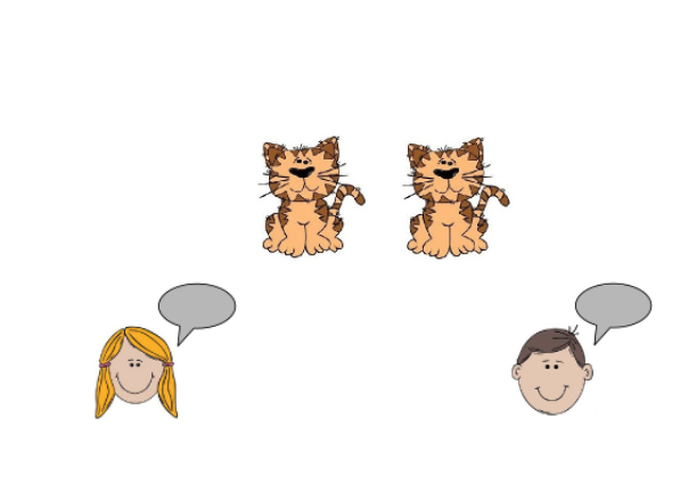Languages have multiple ways of saying things. In some cases, choosing between alternative forms (e.g., dinner vs. supper; cool vs. awesome) depends on aspects of our identity: Among adults, males and females often have difference preferences, and so do younger and older speakers, or speakers of different dialects. But how early on do children learn that word choice/pronunciation may depend on such cues?
Experiments with collaborators Elizabeth Wonnacott, Kenny Smith, and Helen Brown address this question by teaching 5-year-olds an artificial language where word choice depends on whether the speaker is male or female. Some of this work is summarized in this recent presentation I gave at Potsdam University: So far, we have shown that (i) 5-year-olds can indeed track the gender cue (without being explicitly told to look for a cue) from languages featuring either one male/female speaker or multiple male/female speakers and (ii) that they use the cue correctly to guess what boys/girls would have said (Samara, Smith, Brown, & Wonnacott, 2017).
There are exciting avenues for further sociolinguistic research with children, adults and second language (L2) speakers using the artificial language learning methodology (Samara, in press).
